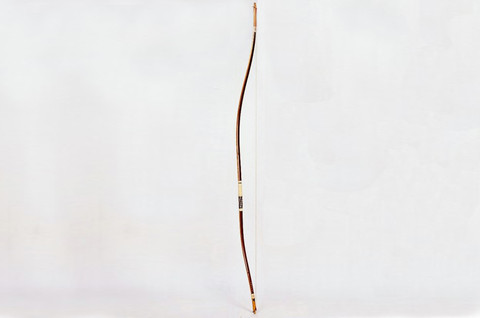
鹿児島成(なり)の流れをくむ大弓で、江戸時代後期には盛んに作られていたことが記録に残っています。明治時代に入り、川内地区から来住した楠見親子が多くの弓作りの職人を養成しました。豊富な原材料に恵まれたこともあって、昭和初期には、東アジアにまで製品が売られるような大産地になりました。
戦後、低迷期がありましたが、最盛期には30人近くの弓作りの職人が活躍していました。現在でもわが国で唯一の産地として竹弓の9割を生産しています。

Closely connected with the history of Kagoshima, there are documents verifying that just after the middle of the 19th century, the making of Miyakonojo bows was a thriving local craft and by the end of the century, many bow makers had been instructed in the craft by two generations of the locally residing Kusumi family. Blessed with plentiful supplies of locally obtainable raw materials, the craft developed and by the 1920s bows were being sold in East Asia. Although there was a fall in demand after World War II, at the height of production there were some 30 bow makers active in the area. It is now the country's only production center for bows, 90% of all bamboo bows being made here.
Following an established pattern, there are seven joints of bamboo on the forward face and six on the inner face. Although the shape may differ according to who makes it, a good bow is thought to be one with a perfect balance between its upper and lower portions, and one to which consideration has been given to its center of gravity and the distribution of weight after the arrow has been shot. With 9 government recognized Master Craftsmen among them, there are now 15 people employed by 11 firms continuing this long tradition.